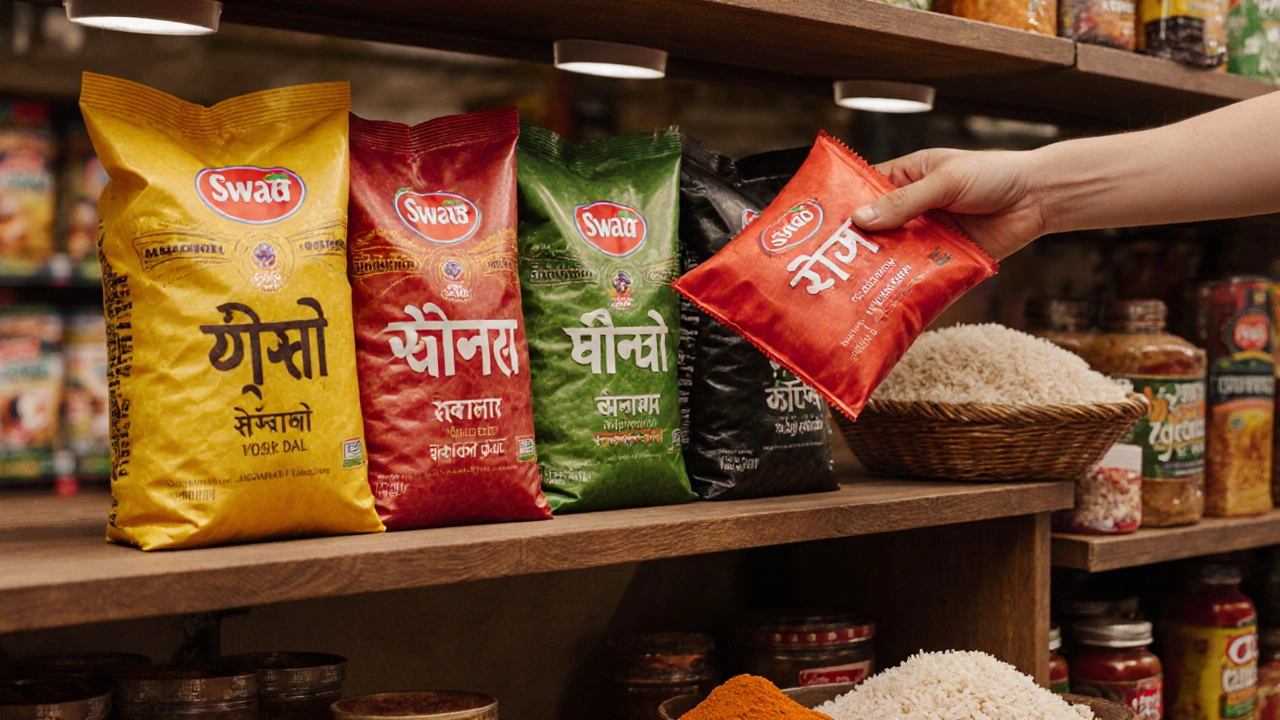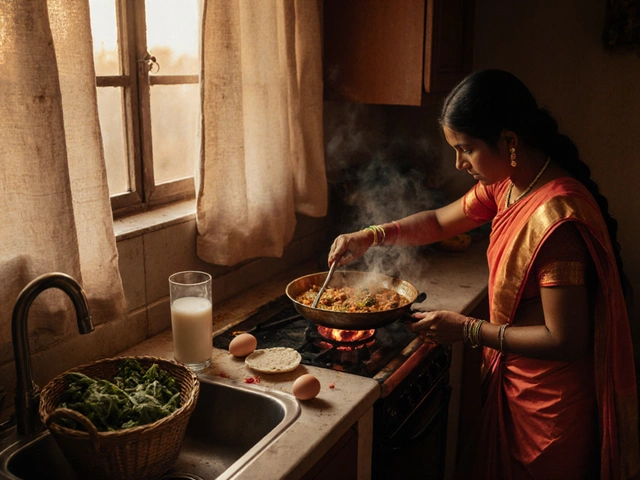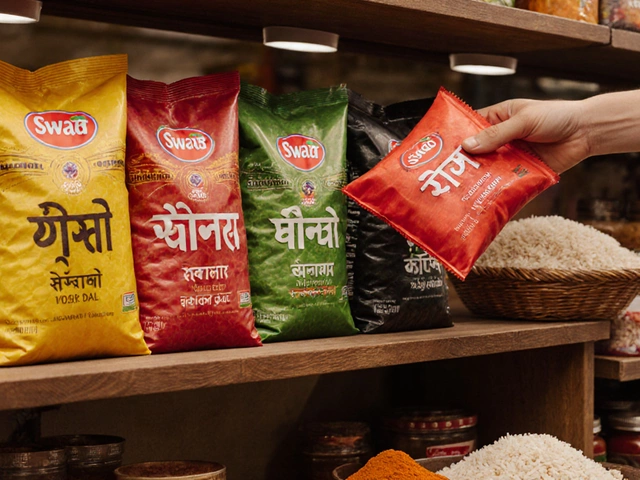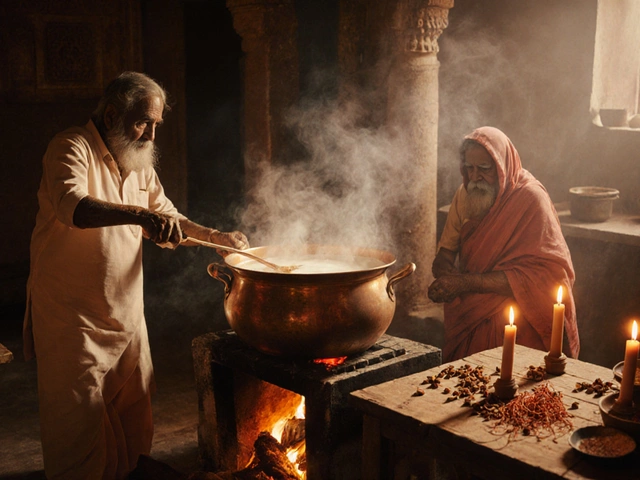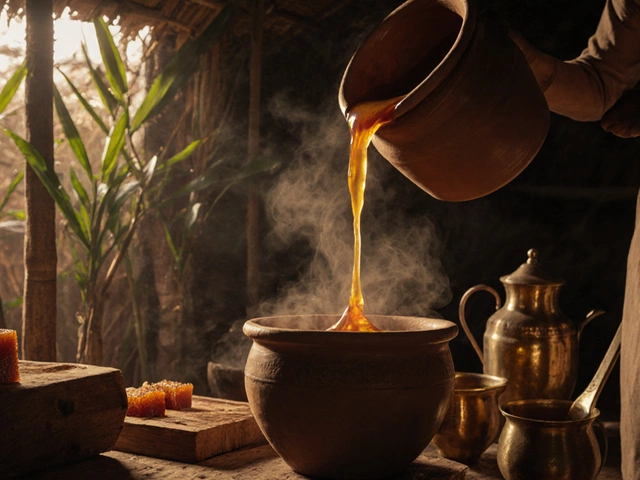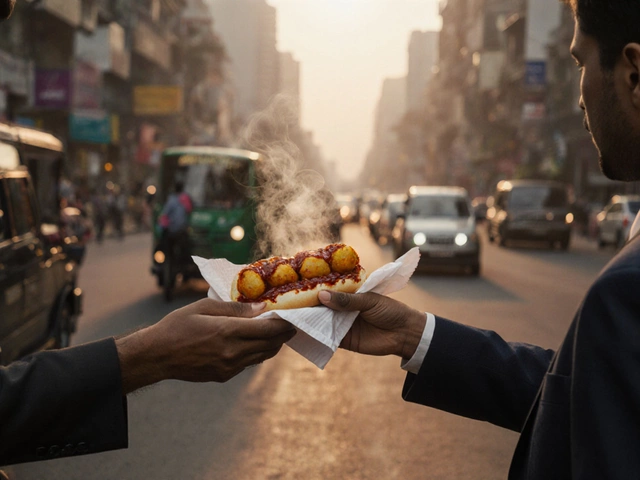Dal Nutrition Calculator
Calculate the protein, fiber, and calories in your dal dish based on serving size. (Based on 1 cup cooked dal = 18g protein, 12g fiber, 220 calories)
Nutritional Breakdown
Protein
0g
grams
Fiber
0g
grams
Calories
0
calories
Did You Know?
A single cup of cooked dal provides about 18g of protein – more than an egg and close to a chicken breast. It's also rich in iron, folate, and magnesium without needing fortification!
If you’ve ever walked into a grocery store in the U.S. and seen a small bag labeled dal sitting next to rice and spices, you might have wondered: What even is this? It’s not a brand. It’s not a spice. It’s not a vegetable. And yet, millions of people in the U.S. cook it every week-often without knowing its full story.
Dal, or dhal, is the Hindi word for lentils. But in India, it’s more than just a legume. It’s a daily meal. A comfort food. A protein-packed staple that shows up at breakfast, lunch, and dinner. In the U.S., you’ll find dal in Indian restaurants, health food stores, and home kitchens of South Asian immigrants. But most Americans don’t realize how simple, cheap, and nutritious it really is.
Dal Isn’t One Thing-It’s Dozens
When someone says "dal," they could mean any one of 20+ types of split lentils, peas, or beans. The most common ones you’ll find in U.S. stores are:
- Yellow dal (toor dal) - Made from pigeon peas, this is the most popular in North India. It turns creamy when cooked and has a mild, earthy flavor.
- Red dal (masoor dal) - Made from red lentils. Cooks fast, breaks down into a smooth paste, and turns orange. Often used in quick weeknight meals.
- Green dal (moong dal) - Made from mung beans. Light, digestible, and great for soups or baby food.
- Black dal (urad dal) - Used in dosas and idlis. Has a nutty taste and holds its shape better than other dals.
These are all sold split and skinned in the U.S., which means they cook in under 20 minutes. That’s faster than rice. And they cost less than $1 per pound at Indian or international grocery stores.
Why Dal Is Everywhere in the U.S. Now
Over the last 15 years, dal has quietly become a go-to for vegans, vegetarians, and health-conscious eaters. Why? Because it’s packed with protein and fiber, low in fat, and naturally gluten-free. A single cup of cooked dal gives you about 18 grams of protein-more than an egg, and close to a chicken breast.
It’s also one of the few plant-based foods that naturally contains folate, iron, and magnesium without needing to be fortified. The CDC recommends lentils as a top source of plant protein for people managing diabetes or heart disease. That’s why you’ll find dal in meal-prep blogs, Whole Foods’ prepared food section, and even college dorm kitchens.
Indian restaurants in the U.S. serve dal as a side dish with rice or roti. But in homes, it’s often the main course. In fact, a 2023 survey by the North American Indian Food Association found that 68% of Indian-American households eat dal at least four times a week.
The Simplest Dal Recipe You’ll Ever Use
You don’t need fancy equipment or 10 spices to make good dal. Here’s a basic version anyone can make in 25 minutes, even if you’ve never cooked Indian food before.
- Wash 1 cup of red or yellow dal under cold water until the water runs clear.
- Put it in a pot with 2.5 cups of water and a pinch of salt. Bring to a boil, then lower the heat and simmer for 15-20 minutes until soft.
- While the dal cooks, heat 1 tablespoon of oil (or ghee) in a small pan. Add 1 teaspoon cumin seeds. Wait until they pop.
- Add 1 chopped garlic clove, 1/2 teaspoon turmeric, and a pinch of red chili powder. Stir for 10 seconds.
- Pour the spice mix into the dal. Stir. Add a squeeze of lemon juice.
- Optional: Top with chopped cilantro.
That’s it. No onions. No tomatoes. No fancy ingredients. Just dal, spices, and water. This version is called simple dal-and it’s how most Indian families make it on busy weeknights.
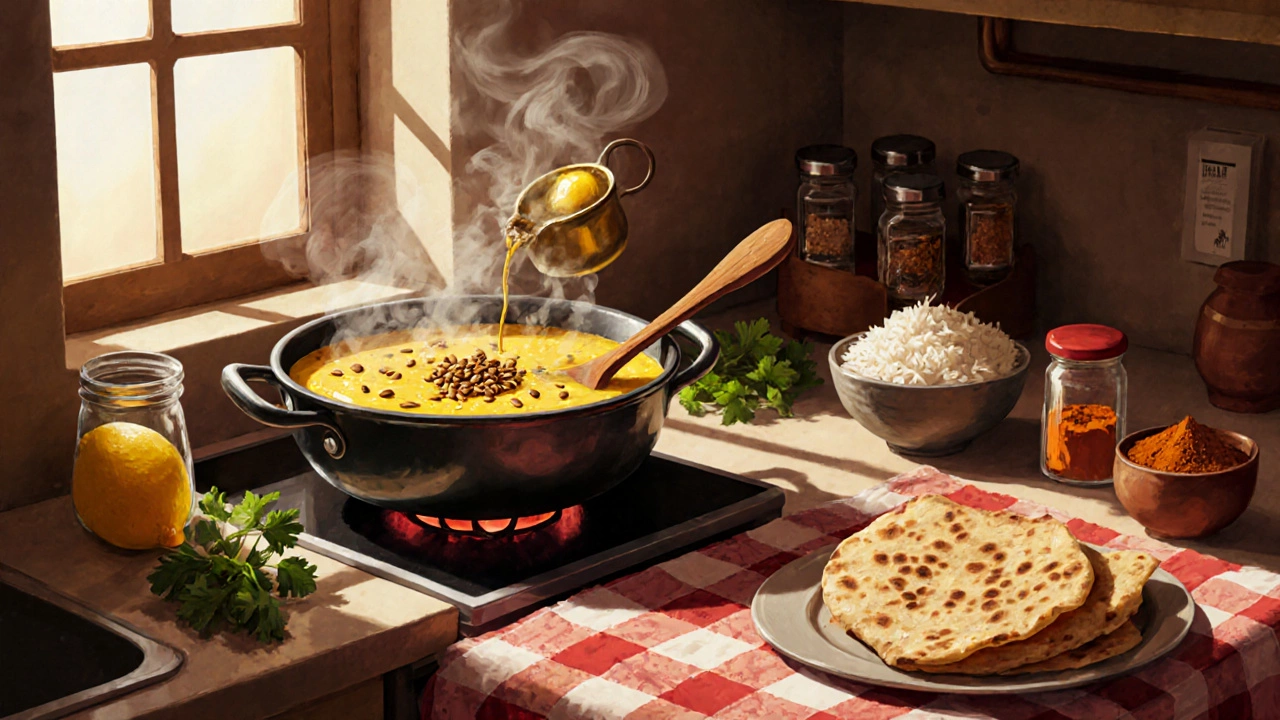
Dal vs. Other Lentils You Know
People in the U.S. are familiar with lentils from the Middle East or Europe. But Indian dal is different in two big ways:
| Lentil Type | Origin | Cook Time | Texture | Common Use in U.S. |
|---|---|---|---|---|
| Indian red dal (masoor) | India | 15-20 min | Smooth, mushy | Stews, soups, baby food |
| French green lentils | France | 25-30 min | Firm, holds shape | Salads, side dishes |
| Black beluga lentils | Canada | 20-25 min | Peppery, firm | Gourmet bowls, vegan protein |
| Split red lentils (Western) | Global | 15-20 min | Soft, breaks down | Thickening soups |
The key difference? Indian dal is almost always cooked until it falls apart. It’s meant to be eaten with rice or bread, not tossed in a salad. The texture is part of the experience.
Where to Buy Dal in the U.S.
You can find dal in three places:
- Indian grocery stores - Best prices and widest variety. Look for brands like Shakti, Patel Brothers, or Swad.
- Asian or international markets - Often carry at least one type of dal, usually yellow or red.
- Whole Foods or Trader Joe’s - They sell pre-packaged red lentils labeled "Indian red lentils" or "masoor dal." Convenient, but more expensive.
Avoid "lentils" in the regular bean aisle unless they’re labeled "split red lentils." Regular brown or green lentils won’t give you the same texture or flavor.
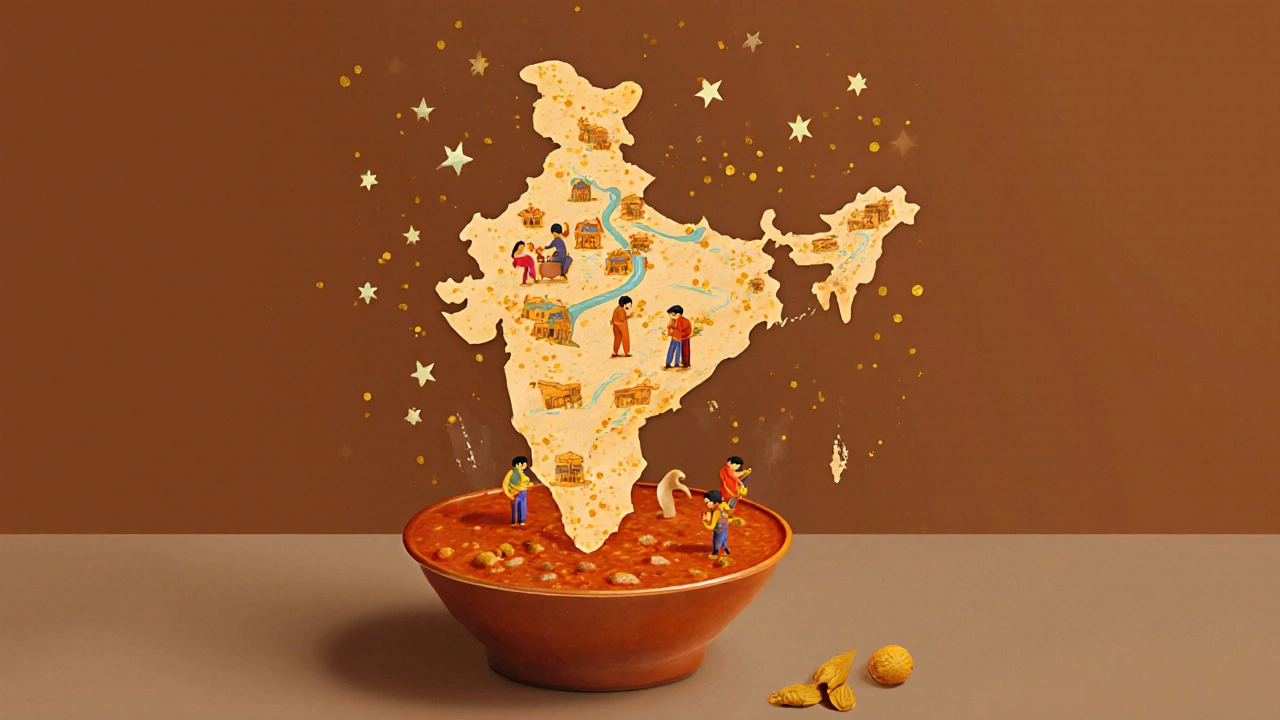
Common Mistakes Americans Make With Dal
Even if you follow a recipe, you might still end up with bland or gritty dal. Here’s what usually goes wrong:
- Not rinsing the dal - It’s dusty. Rinse until the water runs clear, or your dal will taste gritty.
- Skipping the tempering (tadka) - The oil and spices fried at the end? That’s where the flavor lives. Don’t skip it.
- Using too much water - Dal should be thick, not soupy. Start with 2.5 cups water per cup of dal. Add more only if needed.
- Adding salt too early - Some cooks say salt slows cooking. It doesn’t, but adding it after the dal is soft gives better control over flavor.
Dal Is the Perfect Starter Dish
If you’ve never cooked Indian food, start with dal. It’s forgiving. It’s cheap. It’s fast. And it’s the foundation of so many other dishes.
Once you master the simple version, you can add tomatoes, onions, ginger, or coconut milk. You can blend it into a soup. You can serve it with naan. You can make dal fry by cooking it down until it’s thick and crispy on the bottom.
It’s not exotic. It’s not hard. It’s just good food-made from one ingredient, a few spices, and time.
Is dal the same as lentils?
Yes, dal is a type of lentil-but not all lentils are called dal. In India, "dal" refers to any split, skinned, and dried legume: lentils, peas, or beans. In the U.S., "lentils" usually means the whole, unsplit variety. So when you buy "red lentils" in the U.S., you’re buying what Indians call "masoor dal."
Can I use dal instead of beans in chili?
Yes, but it won’t be the same. Dal cooks faster and turns soft and creamy. If you want texture like kidney beans, use whole green or black lentils instead. For a thick, hearty chili, yellow dal works well-it blends into the sauce and adds protein without overpowering flavor.
Is dal gluten-free?
Yes, dal is naturally gluten-free. But check the packaging. Some brands process dal in facilities that also handle wheat, barley, or rye. If you have celiac disease, look for certified gluten-free dal.
Why does my dal taste bland?
Most likely, you skipped the tempering step. The fried cumin, garlic, and spices added at the end are what give dal its depth. Also, make sure you’re using fresh turmeric and chili powder-old spices lose flavor fast. A squeeze of lemon juice at the end also brightens it up.
How long does cooked dal last?
Cooked dal keeps well in the fridge for up to 5 days. It thickens as it cools, so add a splash of water when reheating. You can also freeze it for up to 3 months in portioned containers.
Start with a cup of dal, a few spices, and 20 minutes. You don’t need to travel to India to taste a real Indian meal. You just need to understand what’s in the bag.
